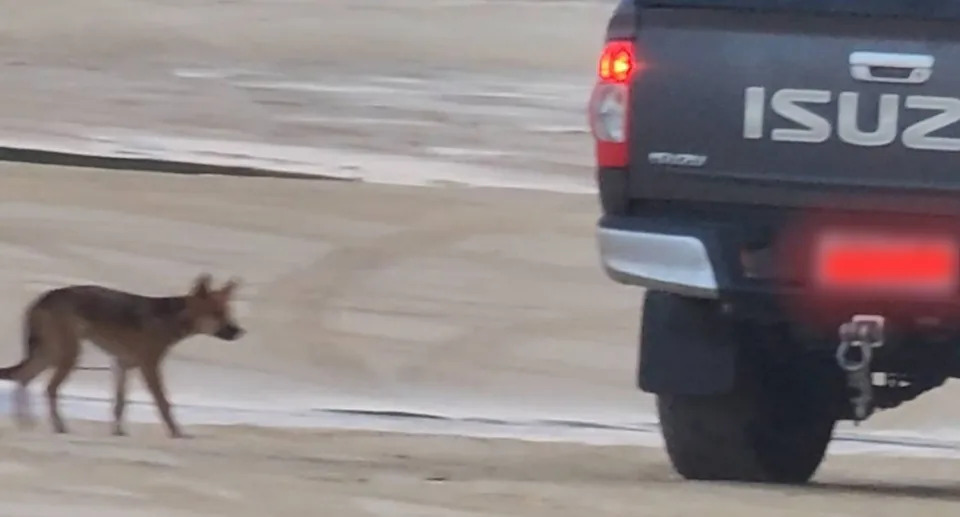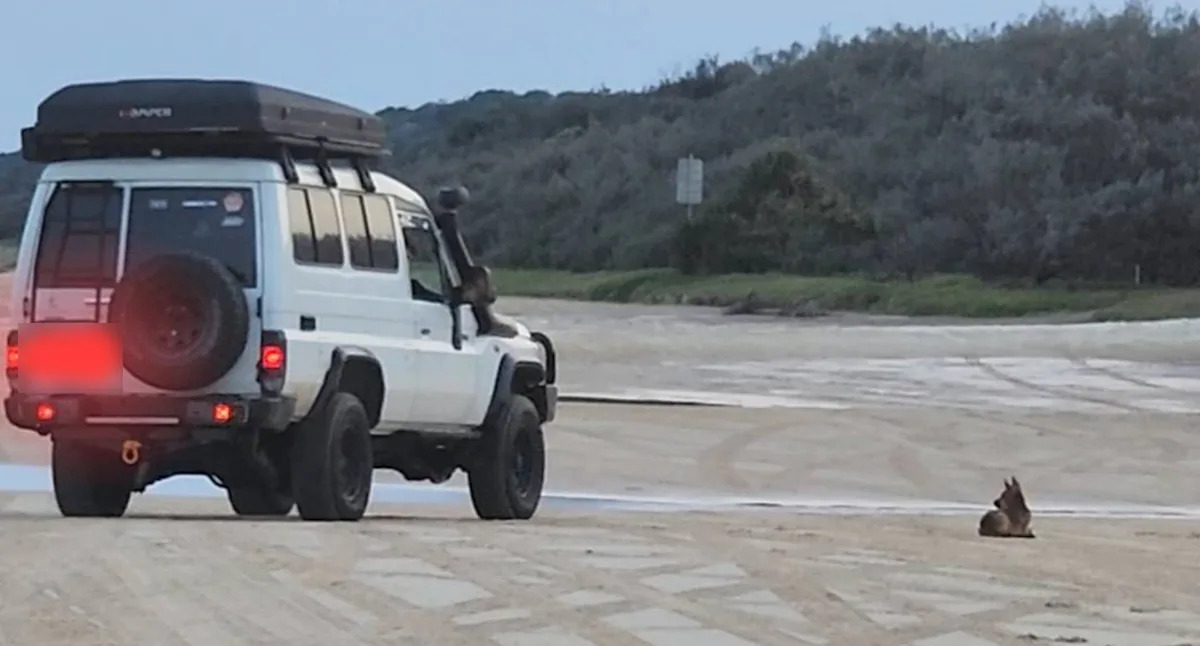Spotting native wildlife is a highlight for many travellers in Australia, but troubling behaviour has been observed on a popular Queensland tourist island, with visitors getting up close and personal, risking fines of $2,670.
Photos of dingo pups being disturbed on K’gari have prompted authorities to remind tourists to keep their distance from the native animals. Witnesses have told Yahoo News buses and 4WDs have been driving dangerously close to the animals to get “pictures and videos”.
A business owner on K’gari told Yahoo vehicles have been getting “far too close” — as close as two metres of dingoes and their young, clearly disturbing them and causing distress.
“It was terrible, they couldn’t do their puppy play, as each time they stopped playing as the cars drove close and scared them… This is really dangerous for them too; they could walk under and get burnt or get run over as you drive off,” the business owner said.
Have you witnessed behaviour like this recently? Contact sophie.coghill@yahooinc.com

Many 4WDs and buses have been spotted very close to dingoes. Source: Facebook/Happy House
Government department issues warning to visitors
Speaking to Yahoo News, Queensland’s Department of Environment, Tourism, Science and Innovation (DETSI) said it advises all visitors and vehicles to keep 20 metres away from dingoes, and fines can be issued if dingoes are disturbed.
“Visitors to K’gari are reminded to be dingo-safe at all times,” DETSI told Yahoo. “People are encouraged to stay at least four car lengths (20 metres) away from dingoes.”
Disturbing or feeding a dingo can result in an on-the-spot fine of $2,670, with a maximum court-imposed fine of $27,538.
Dingoes have to contend with 500,000 visitors to K’gari every year
K’gari is one of the country’s most visited tourist islands with more than 500,000 tourists travelling there every year, with 4WD exploration required due to the large sand island’s terrain, and even buses are fitted with 4WD wheels.
There are approximately 200 dingoes on K’gari and, between September and November, pups emerge after breeding season earlier in the year. While the majority of visitors are respectful towards the wildlife, there have been extreme incidents within the last year that have cast a long shadow on the visiting population.

There have been several extreme cases of mistreatment of dingoes on K’gari in the last year. Source: Supplied & Facebook/Unsealed 4X4
In July, a dingo was found decapitated in a remote area of K’gari. It is believed the animal was struck by a 4WD and then its head was stolen as a trophy, with the tail also removed. It’s believed there were also attempts to skin the animal. Last year, a dingo was found lying in a pool of its own blood after being believed to have been struck and killed by a 4WD.
Dingo do’s and don’ts on K’gari
1. Keep children within arm’s reach at all times
Dingos can move quickly, and children can’t be expected to know how to behave dingo-safe if one approaches.
2. Carry a safety stick
Carrying a long safety stick, such as a hiking pole or umbrella, can be used to deter dingoes from coming too close.
3. Keep your distance from dingoes
Stay at least four car lengths (20 metres) away from dingoes.
4. Dispose of rubbish correctly
Keep food in locked, airtight containers or in the car to ensure dingoes can’t get to them.
5. Don’t run
Running or jogging can attract a dingo’s attention and trigger their instinct to chase. Walking reduces your risk of negative interaction.
6. Don’t be alone
Dingoes are natural hunters and stalk people. Walking or sitting alone at any time can increase your chances of being threatened by a dingo. Always walk in groups to reduce your risk.
7. Don’t feed or interact with dingoes
It’s an offence to feed or make food available to a dingo, including intentionally attracting or disturbing a dingo anywhere on K’gari.
8. Don’t bring food or have picnics on the lake shore or beach
This puts food at the dingo’s level and can encourage them to steal your food.
Do you have a story tip? Email: newsroomau@yahoonews.com.
You can also follow us on Facebook, Instagram, TikTok, Twitter and YouTube.


